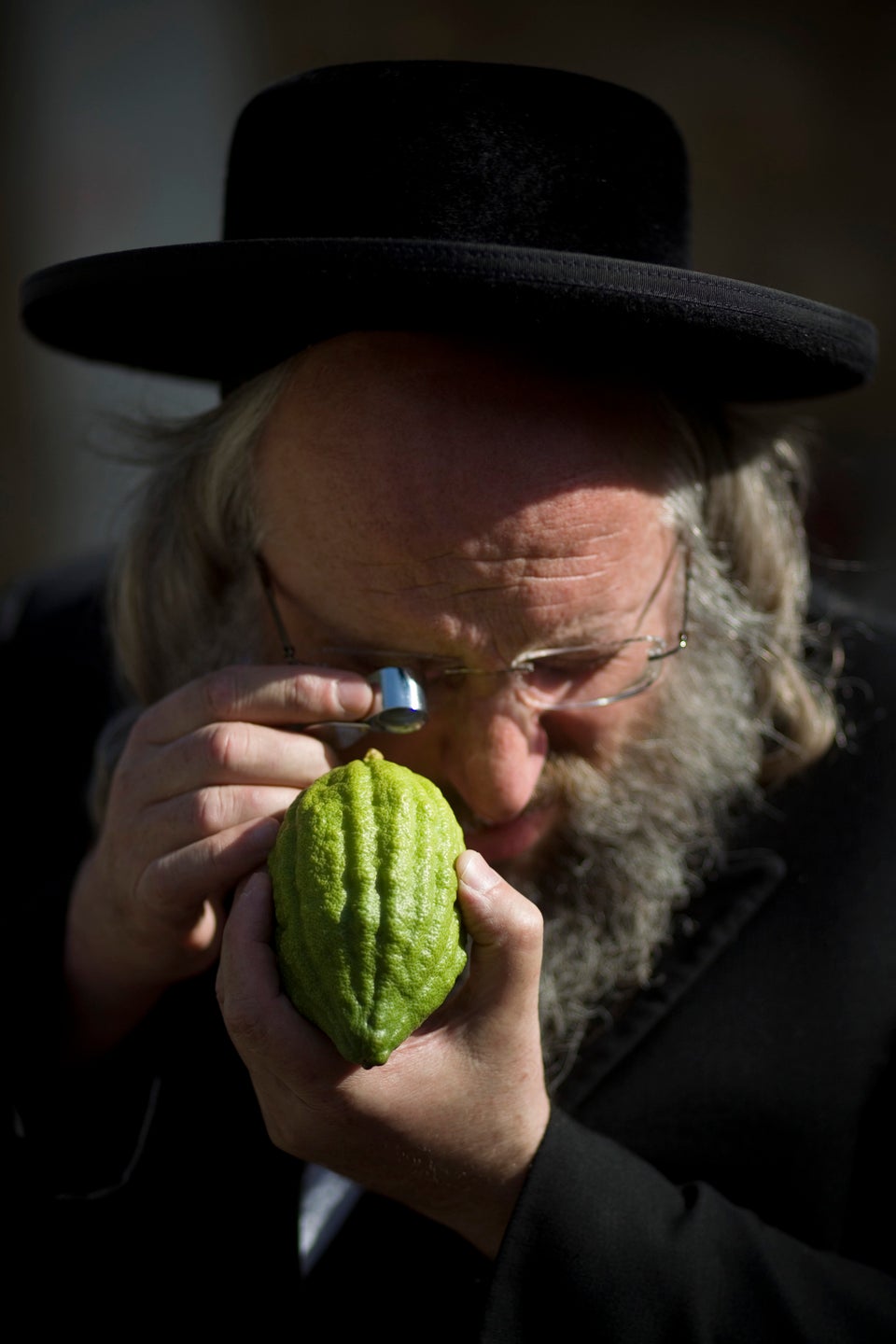
For a religion as old as Judaism, declaring any one ritual or holiday to be "the most" anything seems like folly.
But one practice during the upcoming holiday of Sukkot -- waving the "four species," known as the Lulav and Etrog -- is certainly in the running for most unusual.
The ritual is first mentioned in the Torah in Leviticus 23:40: "And you shall take on the first day the fruit of splendid trees, branches of palm trees and boughs of leafy trees and willows of the brook, and you shall rejoice before the LORD your God for seven days." These are understood to be the etrog (a fragrant citrus fruit), date palm, myrtle and willow.
Today, observant Jews take great care when purchasing the fruit and plants before the festival of Sukkot: leaves are inspected for freshness, the citron is examined under magnifying glasses for perfection and exorbitant prices are paid for the best specimens. Indeed, Hasidic stories grant mystical powers to the etrog and its stringent bearer.
Why so much trouble? According to NeoHasid.org, it all has to do with water. Each plant embodies a habitat of the biblical land of Israel, and each is distinguished by a connection to water. And since Sukkot comes just before Israel's season of rain, the holiday is a time to thank God for summer's abundance and ask for another good year of crops:
"That's why the tips of each species, the pitom of the etrog, the unsplit central frond of the lulav, the end leaves of the myrtle and willow, cannot be dried out: it would be like praying for good health while eating junk food."
The ritual itself is Judaism's closest thing to a rain dance. Leaves of the three trees are joined with the etrog and shaken together three times in six directions: right, left, forward, behind, up and down. This ritualized movement is meant to draw blessing from all corners of the earth and send blessing out to all of creation.
After shaking the lulav and etrog in one direction, it is brought back toward the body before being shaken in the next direction. Rabbi Avraham Arieh Trugman connects the practice to Einstein's elusive Unified Field Theory: "By shaking the four species outward to the six directions of space and then bringing them back to our hearts, we unify and sanctify space within time."
While the ritual of the four species may seem hard to top in terms of uniqueness, it has its competition. Weigh in below...
